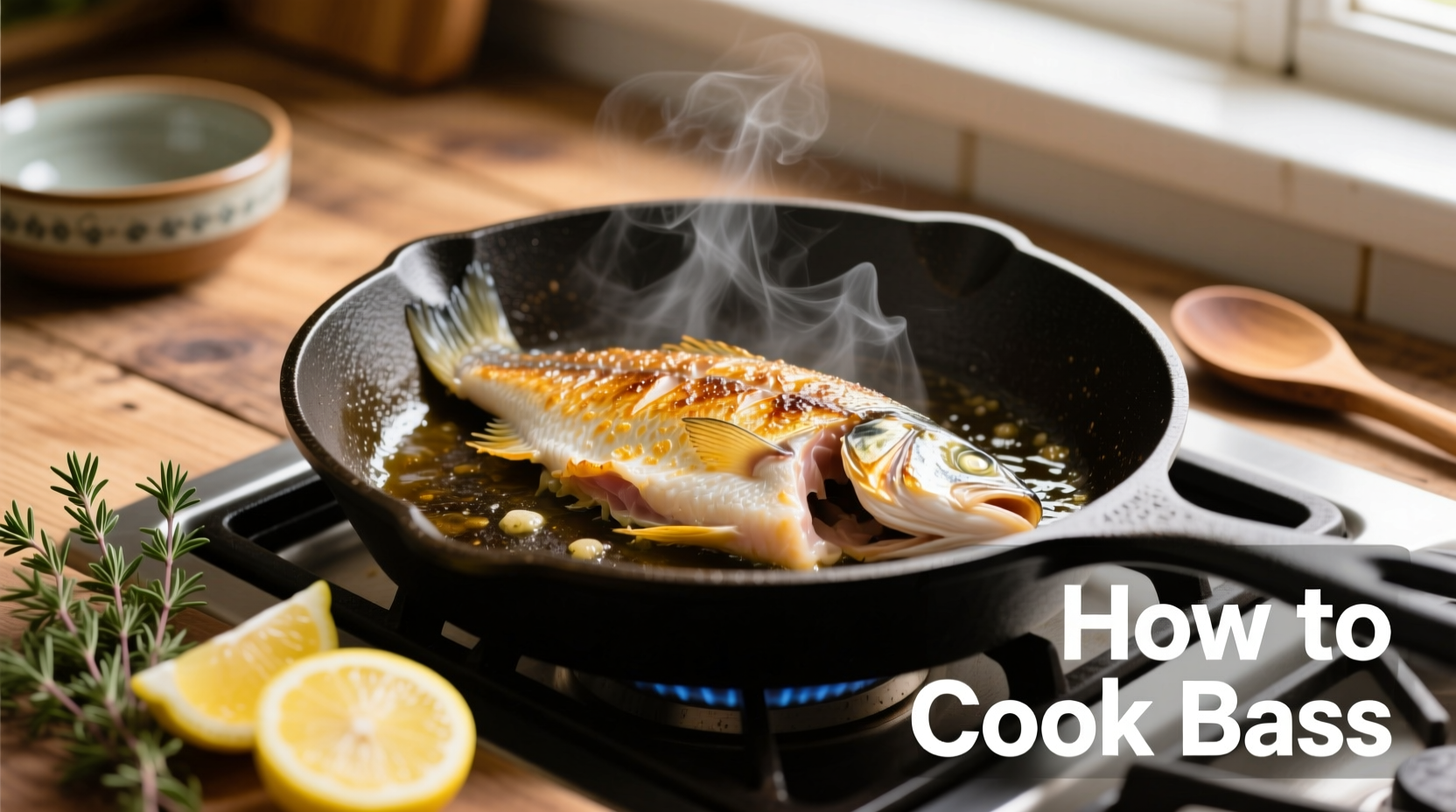The best way to cook bass is by pan-searing with high heat for 3-4 minutes per side until the internal temperature reaches 145°F (63°C), creating a crispy exterior while keeping the delicate flesh moist and flaky. This method works for both freshwater and saltwater bass varieties and requires minimal ingredients for maximum flavor.
Whether you've just reeled in a fresh catch or selected quality bass from your local market, proper cooking technique transforms this versatile fish into a restaurant-quality meal. Bass offers a mild, slightly sweet flavor that responds beautifully to simple preparations, making it perfect for both novice and experienced cooks. In this guide, you'll discover professional techniques that guarantee perfectly cooked bass every time—no more dry, overcooked fillets or frustrating sticking problems.
Why Bass Deserves a Place on Your Menu
Bass stands out among freshwater and saltwater fish for its firm yet delicate texture and clean flavor profile. According to the National Oceanic and Atmospheric Administration, striped bass contains 22 grams of protein per 3-ounce serving with only 120 calories, making it both nutritious and satisfying. Its moderate fat content (approximately 2.5 grams per serving) provides just enough natural moisture to prevent drying during cooking while still delivering that desirable flaky texture.
| Cooking Method | Best For | Cooking Time | Temperature |
|---|---|---|---|
| Pan-Searing | Fillets under 1 inch thick | 3-4 minutes per side | Medium-high heat |
| Oven Baking | Thicker fillets or whole fish | 12-15 minutes | 375°F (190°C) |
| Grilling | Skin-on fillets or whole fish | 4-5 minutes per side | Medium heat |
Essential Preparation Steps Before Cooking
Proper preparation makes the difference between good and exceptional bass. Start by ensuring your fish is properly cleaned—if working with whole bass, have your fishmonger remove scales and gut the fish, or do it yourself using a fish scaler and sharp fillet knife. For fillets, check for any remaining pin bones using tweezers or needle-nose pliers.
Dry the surface thoroughly with paper towels—this critical step prevents steaming instead of searing. Season just before cooking with salt (about 1/4 teaspoon per pound) to avoid drawing out moisture too early. Let the fish sit at room temperature for 15-20 minutes before cooking; cold fish placed directly in a hot pan will cook unevenly.
Mastering the Perfect Pan-Seared Bass
Pan-searing delivers the most reliable results for home cooks. Heat a stainless steel or cast iron skillet over medium-high heat until a drop of water sizzles on contact. Add a thin layer of high-smoke point oil like avocado or grapeseed oil—about 1 tablespoon for a standard skillet.
Place the bass skin-side down if cooking with skin (highly recommended for moisture retention), pressing gently with a spatula for the first 30 seconds to prevent curling. Cook undisturbed for 3-4 minutes until the skin becomes golden and crispy. Flip carefully using a thin, flexible spatula and cook for another 2-3 minutes until the internal temperature reaches 145°F (63°C) as measured by an instant-read thermometer inserted into the thickest part.

Avoiding Common Bass Cooking Mistakes
Based on culinary research from the National Council for Hotel Management, these four pitfalls cause most home cooking failures with bass:
- Overcrowding the pan: Cook in batches if necessary—crowded pans lower the temperature and cause steaming instead of searing
- Touching too frequently: Let the fish develop a crust before attempting to flip—premature flipping causes sticking and tearing
- Skipping the resting period: Allow cooked bass to rest for 3-5 minutes before serving to redistribute juices
- Overcooking: Bass continues cooking after removal from heat—remove when slightly translucent in center
Flavor Combinations That Elevate Bass
Bass's mild flavor pairs beautifully with bright, acidic elements that enhance rather than overwhelm. Professional chefs at the Culinary Institute of America recommend these combinations:
- Lemon-caper butter sauce with fresh parsley
- Herb crust of thyme, rosemary, and tarragon with olive oil
- Asian-inspired glaze with ginger, soy, and a touch of honey
- Simple Mediterranean preparation with cherry tomatoes and olives
For beginners, try this foolproof seasoning blend: 1 teaspoon paprika, 1/2 teaspoon garlic powder, 1/4 teaspoon black pepper, and 1/4 teaspoon dried thyme mixed with 1 tablespoon olive oil. Rub gently over the fish before cooking.
When to Choose Baking or Grilling Instead
While pan-searing works for most situations, certain scenarios call for alternative methods. Baking becomes preferable when cooking thicker cuts (over 1.5 inches) or when preparing multiple portions simultaneously. The controlled oven environment prevents uneven cooking that can happen with stovetop methods.
Grilling shines when cooking whole bass or larger fillets with skin. The direct heat creates beautiful grill marks while the skin protects the delicate flesh. Always oil the grill grates thoroughly and cook over medium heat to prevent sticking. For saltwater bass varieties like sea bass, grilling enhances the natural oceanic flavors with subtle smokiness.
Pro Tips for Consistently Perfect Results
Professional chefs consistently achieve better results through these advanced techniques:
- Brine for moisture: Soak bass in 4 cups water with 1/4 cup salt for 15-20 minutes before cooking for exceptionally moist results
- Temperature control: Use an instant-read thermometer—bass is perfectly cooked at 140-145°F (60-63°C)
- Skin crispiness secret: Pat skin completely dry and score lightly before cooking to prevent curling
- Flavor infusion: Place lemon slices and fresh herbs under the fish while cooking for subtle flavor penetration











 浙公网安备
33010002000092号
浙公网安备
33010002000092号 浙B2-20120091-4
浙B2-20120091-4